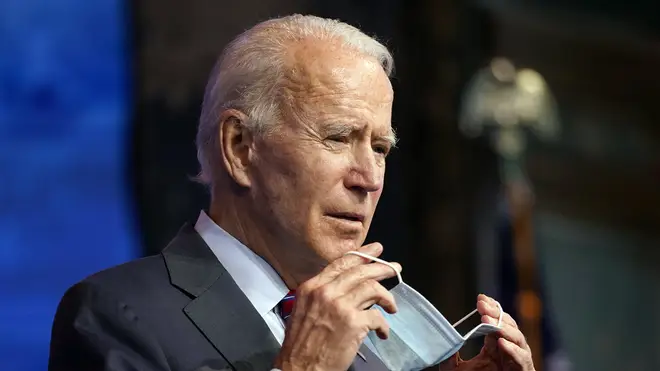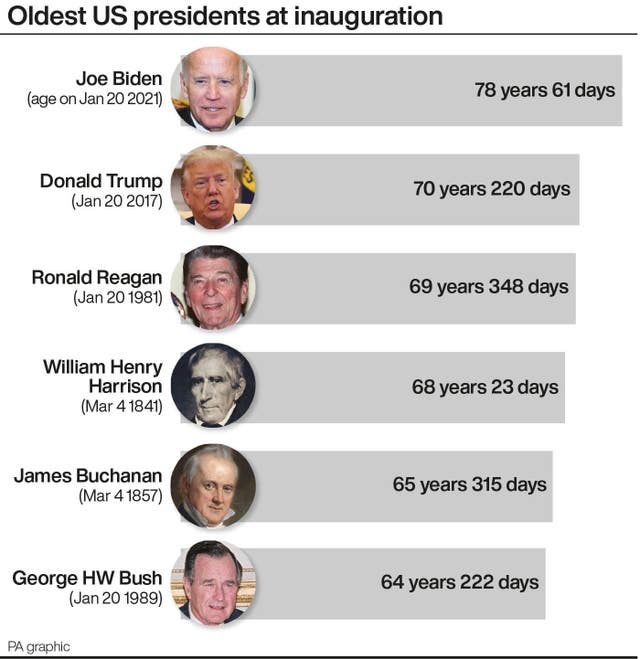
Ben Kentish 10pm - 1am
5 December 2020, 01:14

Mr Biden’s win in the state brought his tally of pledged electors so far to 279.
California has certified its presidential election and appointed 55 electors pledged to vote for Joe Biden, officially handing him the Electoral College majority needed to win the White House.
Secretary of State Alex Padilla’s formal approval of Mr Biden’s win in the state brought his tally of pledged electors so far to 279, over the 270 threshold for victory.
These steps in the election are often ignored formalities, but the hidden mechanics of electing a US president have drawn new scrutiny this year as President Donald Trump continues to deny his opponent’s victory.
Mr Trump continues to pursue increasingly specious legal strategies aimed at overturning the results before they are finalised.
Although it has been apparent for weeks Mr Biden won the presidential election, his accrual of more than 270 electors is the first step toward the White House, said Edward Foley, a law professor at Ohio State University.
“It is a legal milestone and the first milestone that has that status,” he said.
“Everything prior to that was premised on what we call projections.”
The electors named on Friday will meet on December 14, along with counterparts in each state, to formally vote for the next president.

Most states have laws binding their electors to the winner of the popular vote in their state, measures that were upheld by a Supreme Court decision this year.
There have been no suggestions that any of Mr Biden’s pledged electors would contemplate not voting for him.
Results of the Electoral College vote are due to be received, and typically approved, by Congress on January 6 and, although politicians can object to accepting the electors’ votes, it would be almost impossible for Mr Biden to be blocked at that point.
“As a practical matter, we know that Joe Biden is going to be inaugurated on January 20,” Mr Foley said.

That was clear in the days after the election, when the count of mail ballots gradually made clear Mr Biden had won victories in enough states to win the Electoral College.
It became even more apparent in late November, when every swing state won by Mr Biden certified him as the winner of its elections and appointed his electors to the Electoral College.
Mr Trump has fruitlessly tried to stop those states from certifying Mr Biden as the winner and appointing electors for the former vice president.
He made no effort in deeply Democratic California, the most populous state in the nation and the trove of its largest number of electoral votes.
Three more states won by Mr Biden – Colorado, Hawaii and New Jersey – have not yet certified their results and when they do, he will have 306 Electoral College votes to Mr Trump’s 232.
Mr Trump and his allies have brought at least 50 legal cases trying to overturn the results in the swing states his opponent won – mainly Arizona, Georgia, Michigan, Pennsylvania and Wisconsin.
The president and his allies have also raised the far-fetched notion that Republican state legislatures in those states could appoint a rival set of electors pledged to Mr Trump.
But state Republican leaders have rejected that approach, and it would likely be futile in any case.
According to federal law, both chambers of Congress would need to vote to accept a competing slate of electors. If they do not, the electors appointed by the states’ governors – all pledged to Mr Biden in these cases – must be used.
The last remaining move to block the election would be the unrealistic and impractical effort to vote down the electors in Congress.
This tactic has been tried – a handful of congressional Democrats in 2000, 2004 and 2016 objected to officially making both George W Bush and Mr Trump president – but the numbers were not enough to block the two men from taking office.